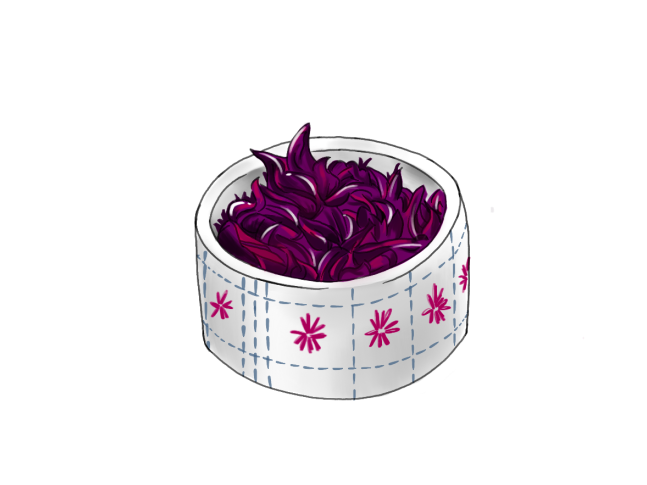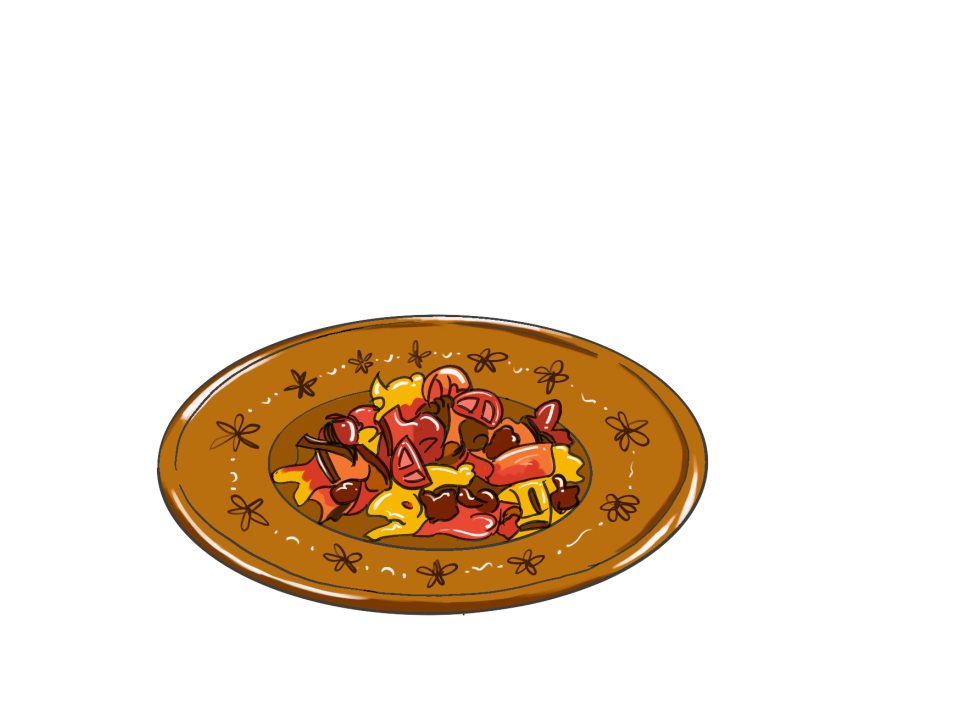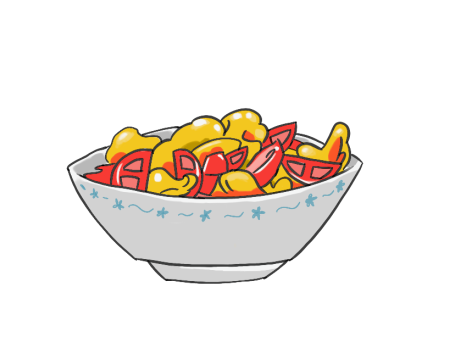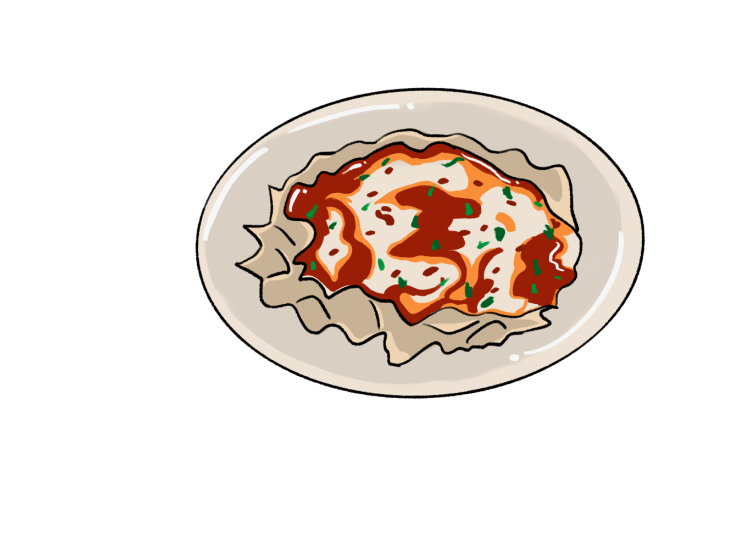Recipes Around the World
Food offers a unique way to connect to one’s culture. The generational aspects of traditional food, and the ability to recreate it for the people you love, make it invaluable to the heart and soul of a family. This is a glimpse into what food can mean to different people.
Food offers a unique way to connect to one’s culture. The generational aspects of traditional food, and the ability to recreate it for the people you love, make it invaluable to the heart and soul of a family. This is a glimpse into what food can mean to different people.
Sami Lee

Paly senior Sami Lee values her family time and she does this by honoring her late grandmother through her braised red cabbage recipe.
“I never got to meet my grandma because she died before I was born, so it really makes me feel more connected to her,” Lee said.
“My grandma White, she’s a very sweet lady, I’m told, and she’s a really good cook,” Lee said. “It’s nice to have a taste of something she poured a lot of love into because she created the recipe. She made it her own and so it’s like her recipe.”
This recipe takes multiple hours to make, but the end result is well worth the wait.
“It’s a red cabbage and you broil it for 10 hours and it’s super soft and you add jelly and red wine and all these good things,” Lee said. “It’s sweet, sour and soft, but also really good.”
Lee’s grandmother’s Danish recipe is one that the family enjoys only on special occasions.
“My family saves it for special occasions; they have it on Christmas and New Year’s and birthdays, and my mom makes it really well,” Lee said.
This family recipe brings the Lee family together, and Lee believes that the connection created by food can bring any family together.
“The relationship between food and family is that when you make food with your family that reminds you of your family, it draws you closer to your family and that is just amazing,” Lee said.
Yahir Lobo Johnston

Paly senior Yahir Lobo Johnston has fond memories of his mother’s aporreadillo, a Mexican dish that consists of meat, usually carne asada, beaten with eggs and a salsa made from chilis like jalapeños.
“It tastes really good,” Johnston said. “It’s kind of spicy, because of the salsa, and it is just nostalgic for me.”
The dish originates from Guerrero, Alcapulco, the region his mother is from, and has been passed down for generations in their family.
“The only one I know who can cook it is my mom,” Johnston said. “And she was taught by my grandmother.”
The generational nature of these family recipes is a large part of what makes family dishes special and unique to each family and culture.
“There are certain foods that are usually only passed down from generation to generation,” Johnston said. “So I guess, depending on whether you’re at your friends’ family, or with your own family, there are always going to be different foods with different meanings to different people.”
The value these dishes have to the identity of a family’s culture makes it worth passing on for generations to come.
“[It is important to carry these recipes on] to keep the memory of the people who first made it and also [for their] cultural importance,” Johnston said.
Bernice Zhu

Fragrant ginger and garlic herbs meld with freshly cut tomatoes, as an egg sizzles over the stove. The ingredients meet over a bed of warm rice. Using a recipe that originates back to China, Paly senior Bernice Zhu cooks a homemade meal.
Tomato egg stir fry, or 西红柿炒鸡蛋, is a nationally popular dish for its simple yet heart-warming taste, making it the ideal home-cooked meal for many people with Chinese roots.
“This recipe is important to me because it is efficient in cost and time, and I really love tomatoes,” Zhu said. “This dish is simplistic and easy to customize with personal touches, and pairs well over breads and rice.”
Some families might opt to change the ingredients to suit their personal taste or the availability in their region. Zhu’s rendition of the recipe originates from her grandmother’s friends back in China.
“I make this recipe every other week with my grandmother, and sometimes more often depending on the tomato yield of our garden,” Zhu said.
From garden to kitchen, Zhu uses tomato egg stir fry to foster connections with her family. In a broader sense, she views the complex relationship between food and family as a facilitator for family bonding, if people have the correct mindset.
“No matter the quality of the food, it’s more so how you choose to use it,” Zhu said. “You can sit in silence at a home-cooked meal and also bond over takeout.”
Whether it’s cooking a physical dish or eating around the dinner table, food is a powerful method for nourishing relationships. To continue creating these relationships, Zhu believes that sharing recipes is a viable way to carry on the love.
“If you want to be mushy and sentimental, then yes, telling someone your favorite recipe is a good way to [share love],” Zhu said.
Lara Dumanli

Surviving the travel between multiple nations and generations, Paly sophomore Lara Dumanli’s family manti recipe is a delightful dumpling filled with meat and the occasional peanut. When Dumanli’s family immigrated from Turkey to Canada and later to the US they made sure to pack their family recipe.
“[My family] tried to bring all [our] Turkish recipes in two luggages and one recipe that [we] brought is called manti,” Dumanli said.
Manti is a Turkish dumpling, traditionally created with the entire family as people encase filling within the dumpling skins.
“I usually make it in Turkey and I have my aunts and neighborhood friends who come over,” Dumanli said. “Sometimes we freeze it and eat it later on.”
When creating manti, Dumanli’s family usually hides a surprise peanut within the array of dumplings.
“Whoever eats the peanut is like the king,” Dumanli said.
For Dumanli, the meaning of family is not exclusive to close relatives. Food bonds people across households together for a communal purpose: eating.
“In Turkey, the culture [of eating manti] is not always [with] your direct family,” Dumanli said. “I eat it tons of times with [my] neighbors and [my] friends. You truly eat it with the people that you love.”
Art by Christy Du
Print Issue
Please click on the three vertical dots on the top right-hand corner, then select “Two page view.”

2020-2021 - Staff Writer
2021-2022 - Staff Writer
2022-2023 - Managing Editor
I joined C Mag because of the focus on arts and representing our...

2021-2022 - Staff Writer
2022-2023 - Business Manager
I joined C mag because art has always been a big part of my life. I always loved looking through...

2021-2022 - Staff Writer
2022-2023 - Managing Editor
Pronouns: he/him






